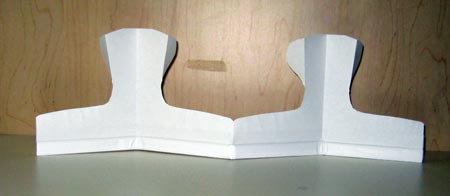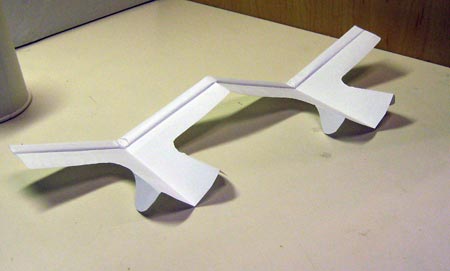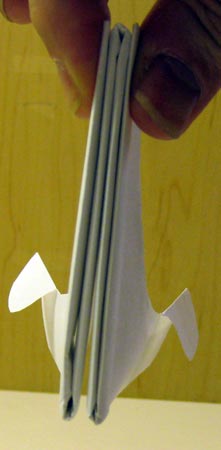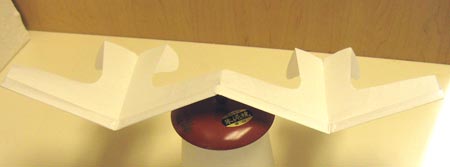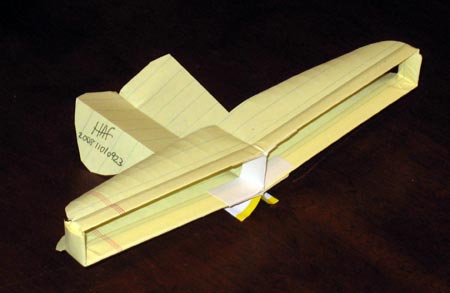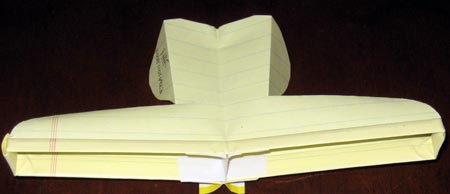


In Popular Mechanics there was an article many years ago about the Channel Wing: a propeller plane where the propellers were mounted above curved portions of the wings to draw the air over the wing. It was called the Custer Channel Wing for its inventor. Several models were built; the performance was so astonishing no one really believed it.
and here
These are the two articles in Popular Mechanics. I tried to make a paper airplane that duplicated the Custer Channel Wing, and it flew pretty well. One day I realized that some really good paper for this would be uncirculated dollar bills; folding money. These fly really well, are very difficult to fly straight, and a lot of fun.
To make one, fold a new dollar in half, unfold, then fold lengthwise in half the other way, unfold. The center lengthwise fold is valley, the short fold is mountain. Fold over an eighth-inch on the long edge. Fold this over, and over and over. Do this slowly, making sure the folds are parallel. With a little luck, the last fold is the lengthwise one; if not, the lengthwise fold will show up as a line on the built-up leading edge.
Now fold the dollar in half. Roll up one side with a pencil. Flip it around and roll up the other side with a pencil. Now smooth out the plane, snap it a few times, shape the curves so they match. Sometimes a bit of curl on the trailing edge (up elevator) in the center of the curve makes a big difference.
To throw, grasp the plane from the rear (Thick end forward, thin end back) lightly gripping the center fold. Push forward and release. This plane flies fast! Very fast and very flat glide. I’ve measured 10 to 1 on occasion. You should be able to fly twenty to thirty feet if you have the room. If you fly it indoors, it will land under and hide behind furniture.
